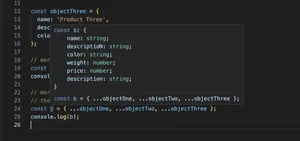Introduction
TypeScript, a superset of JavaScript, offers enhanced type-checking, leading to more robust code bases. Understanding how TypeScript handles ‘null’ and ‘undefined’ types is crucial for developers to write error-free applications. This guide walks you through the practical nuances of these types.
Understanding Null and Undefined
In TypeScript, both ‘null’ and ‘undefined’ can signify the absence of a value, but they are used differently. ‘Undefined’ is the default value for uninitialized variables, while ‘null’ is often used to represent an intentional absence of any object value.
let variableOne: string;
console.log(variableOne); // Output: undefined
let variableTwo: string | null = null;
console.log(variableTwo); // Output: null
Working with Null and Undefined
When declaring variables in TypeScript, you can use union types to specify that a variable can be ‘null’ or ‘undefined’.
let variableThree: string | null | undefined;
variableThree = 'A string';
variableThree = null;
variableThree = undefined;
This flexibility allows functions to indicate optional parameters and even the potential absence of a return value.
function getOptionalValue(): string | undefined {
// Some logic that might not return a string
return undefined;
}
function processSomething(value: string | null) {
// Process knowing that value can be explicitly null
}
Type Guards and Null Checks
Type guards are a fundamental concept in TypeScript that allows for conditional code execution based on type. Using strict null checks, developers can avoid common runtime errors.
if (variableThree !== null && variableThree !== undefined) {
console.log('variableThree is a string.');
}
Nullish Coalescing and Optional Chaining
Recent versions of TypeScript introduce nullish coalescing and optional chaining, providing more elegant syntax for dealing with ‘null’ and ‘undefined’.
let variableFour: string | undefined;
let defaultString = variableFour ?? 'Default String';
console.log(defaultString); // Output: 'Default String'
let obj: { value?: string | null } = {};
let chainedValue = obj.value?.toUpperCase();
console.log(chainedValue); // Output: undefined
Advanced Usage Patterns
Advanced patterns, like using type predicates, can ensure more precise control over ‘null’ and ‘undefined’.
function isString(value: any): value is string {
return typeof value === 'string' && value !== null;
}
if (isString(variableThree)) {
console.log('variableThree is a confirmed string.');
}
Similarly, when dealing with array methods like ‘filter’, you can use type assertion to filter out ‘null’ or ‘undefined’ values.
let arrayOfValues: (string | null | undefined)[] = ['hello', null, 'world', undefined];
let filteredArray: string[] = arrayOfValues.filter((value): value is string => value !== null && value !== undefined);
console.log(filteredArray); // Output: ['hello', 'world']
Error Handling with Null and Undefined
The TypeScript compiler’s strict flag enforces strict null checking, making it easier to avoid ‘null’ and ‘undefined’ bugs in your code.
// TypeScript config with strict null checks enabled
{
"compilerOptions": {
"strict": true,
"strictNullChecks": true
}
}
This forces you to handle ‘null’ and ‘undefined’ deliberately in your code, reducing the incidence of null reference errors.
Conclusion
This comprehensive guide to ‘null’ and ‘undefined’ in TypeScript provides the foundation you need for safe type handling in your TypeScript applications. Embrace the discipline of type safety, leverage strict checks, and you’ll write clearer and more reliable TypeScript code.
